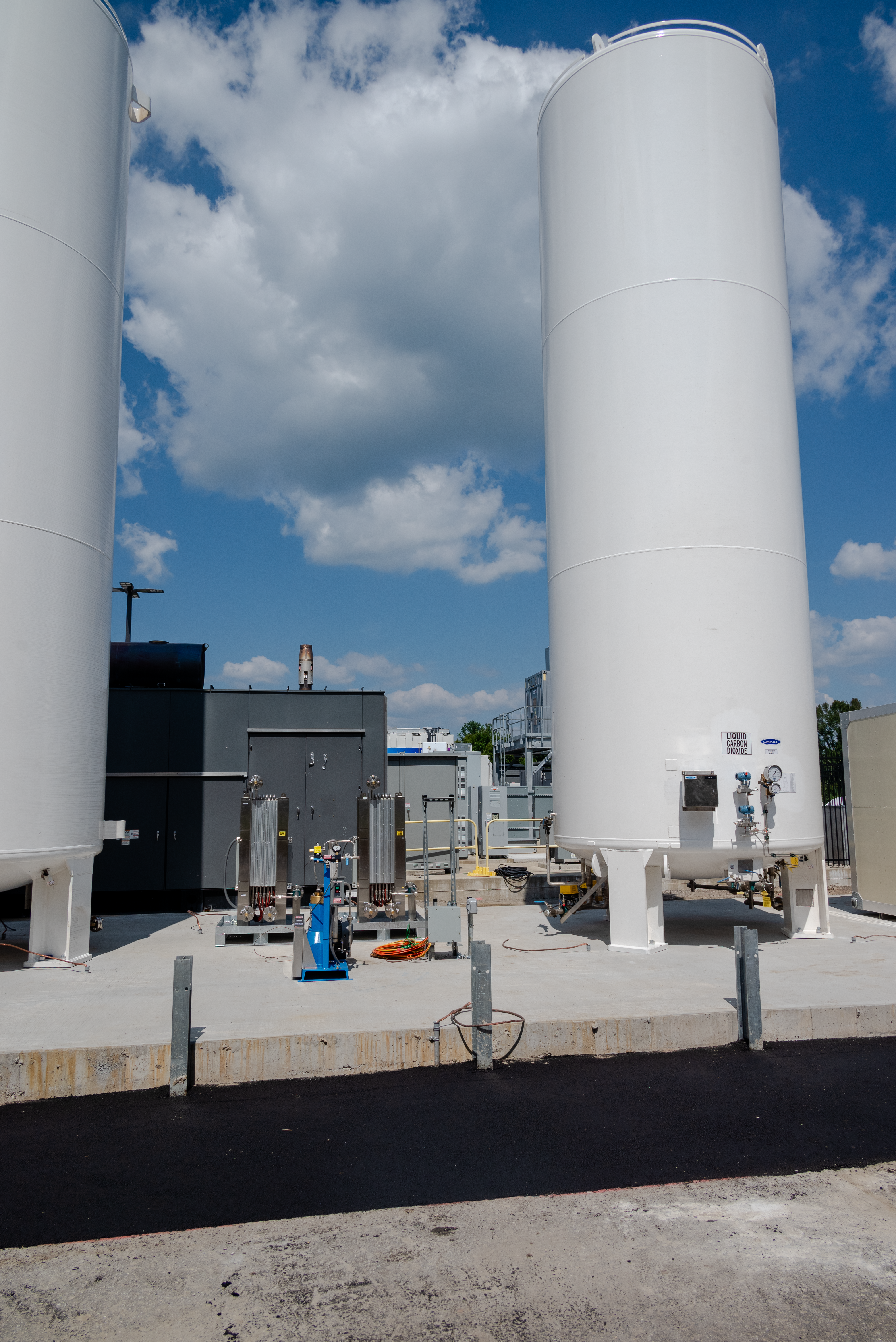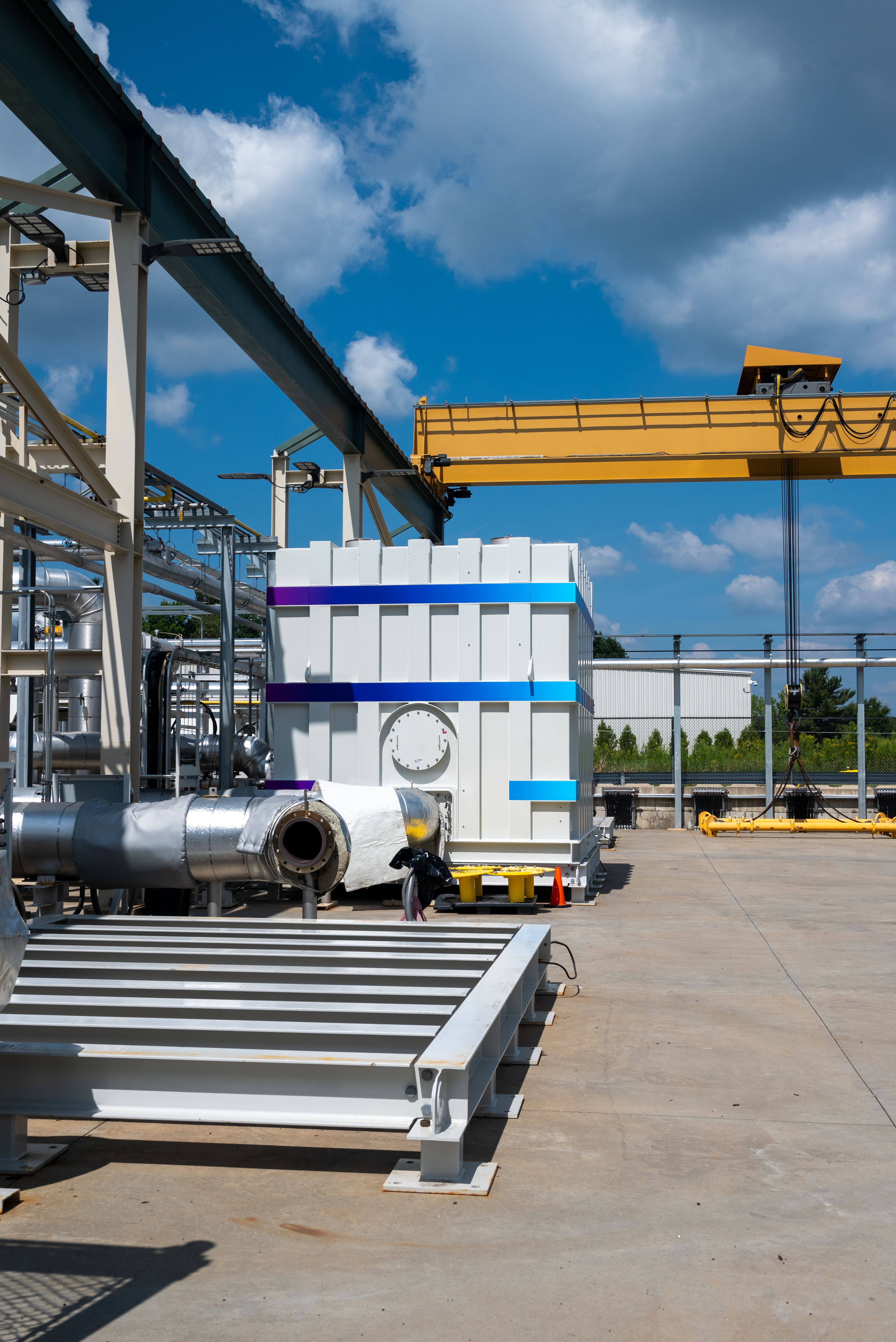Connecticut is home to an emerging and effervescent energy solution
Why did Fuel Cell Energy, a Danbury-headquartered manufacturer of fuel cell technologies, attend the World Brewing Congress?
“The origin story of how we got into food and beverage begins with the Kirin beer factory in Japan,” explained Lindsey Cole, Fuel Cell Energy’s sales director for food and beverage.
“The Kirin factory was one of our first commercial projects, it was running on biogas from the fermentation of the hops and barley, but as we have evolved and had a couple other food and beverage customers we’ve really gotten an understanding about CO2 in this industry,” Cole continued, noting that the pandemic made many people painfully aware of an otherwise overlooked link in their supply chains. “Over the past three or four years we saw a gap in the supply chain of CO2, which is vital to so many food and beverage businesses.”
The molten carbonate fuel cells that Fuel Cell Energy manufactures at its production facility in Torrington have the unique property of producing concentrated CO2 that is also easy to capture and make use of, either in industrial applications or in food-grade roles after a process of purification and concentration.

CO2, according to Cole, is incredibly valuable to brewers for a number of processes, including adding carbonation to increasingly popular hard seltzers. As the market share for fizzy drinks increases, the demand for the raw ingredient that makes bubbly booze possible on an industrial scale also grows.
And adding bubbles is not the only food and beverage use. A frozen steak might have CO2 used in the abattoir for humane stunning, CO2 pumped into the packaging to push out oxygen that could cause spoilage, and then blocks of solid CO2, commonly referred to as dry ice, placed in shipping containers to keep the meat cold during shipping.
Facilities that use large amounts of CO2, need reliable power generation, and can make use of steam or hot water, Cole described molten carbonate fuel cells, which are produced only at the Torrington facility as a way to achieve the “cogeneration” that has boosted the efficiency of many plants running on other fuel sources. Fuel cells can also generate large quantities of hot water and electricity, with the added benefit of on-site CO2 sourcing, as opposed to the more common option of buying it from ethanol plants that capture some of it as a byproduct.
The capture and use of CO2 is also a top priority for meeting emissions goals for many companies. While naturally occurring and harmless in low concentrations, carbon dioxide is a major contributor to global warming as a greenhouse gas. Many processes unavoidably produce CO2, so the ability to capture it and use it as opposed to allowing it to escape into the atmosphere is economically sound as well as attractive from an environmental perspective.

Fuel Cell Energy’s Senior Director of Advanced Manufacturing Thomas Lucas explained that the ability to capture the CO2 successfully comes from the unique way the company’s molten carbonate fuel cells work.
“We’re the only carbonate fuel cell manufacturer right now,” Lucas noted. “So, our fuel cells from our facility in Torrington are uniquely positioned because ‘carbonate’ is CO3. We use carbonate as our electrolyte, part of our electrical generation process. We use CO2 and oxidize it to make CO3, so there is actually a need for CO2 in our carbonate fuel cell.”
He said that fuel cells are almost more closely related to batteries than typical generators that burn fuels for power. Instead of releasing the energy contained in a fuel through combustion, the cells use a chemical process to release the energy.
The result is a more complete extraction of energy from a given fuel, happening in a smaller, more contained space, producing megawatts worth of electricity with a smaller footprint than a traditional combustion powered plant. According to Thomas, the plants are also quieter, likened to a large hair dryer more than a full industrial facility.
The unobtrusiveness and modularity, combined with Connecticut’s unique move to classify them as a Class I renewable resource on par with solar and wind power has caused the technology to quietly proliferate in Connecticut.
In fact, making people notice fuel cells can be a challenge.
“We have a facility in Bridgeport, and we wanted to put up a sign so that people on the trains could see it when they went by,” Fuel Cell Energy Director of Communications Kathleen Blomquist said with a laugh. “They timed how many seconds people would be able to see the sign going by the facility and it was only 1.3 seconds.”
The blink-and-you-miss-it nature of the facility can make it hard for people in Fairfield county to realize that they have 14.9 MW of power being produced in the heart of a growing city, but Blomquist said that she hopes that a demonstration plant at the Torrington facility will help bring more attention to the role fuel cells can have for the community.
In fact, there are plans to expand on the food and beverage aspect of the facility that could include a “tasting room” where companies using the technology to supply CO2 for their products can demonstrate how an odorless, tasteless gas can make for amazing food and drink.